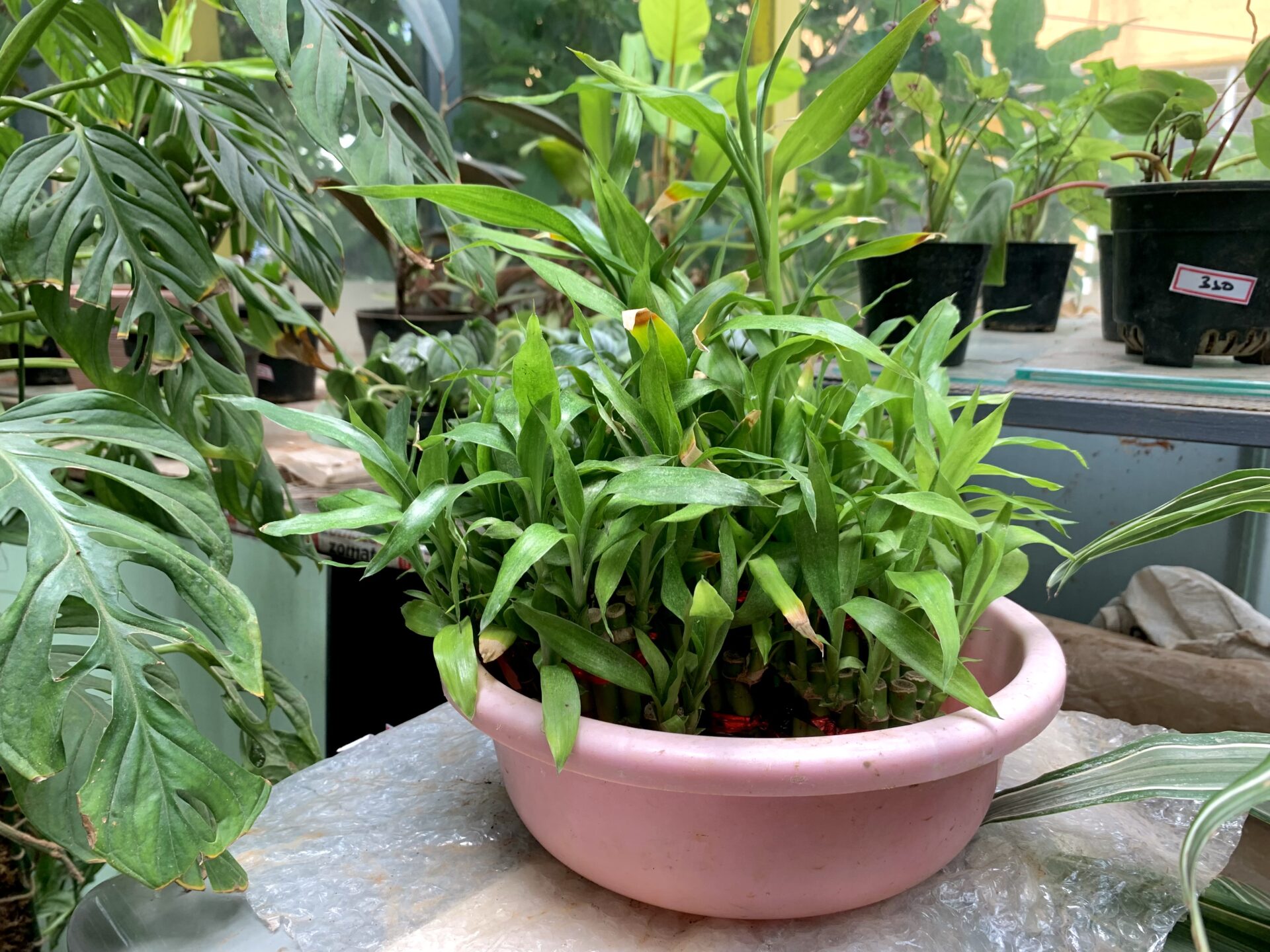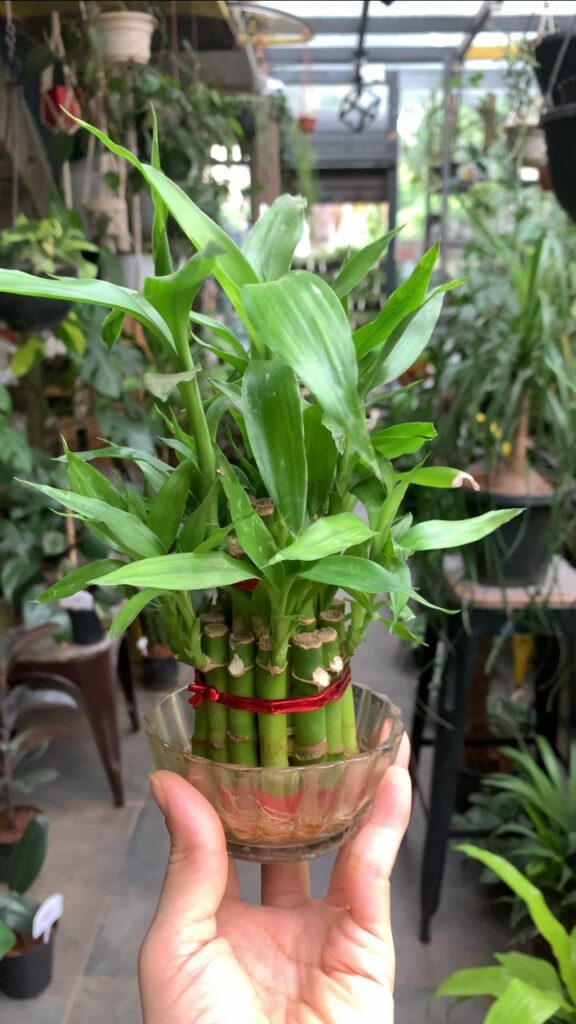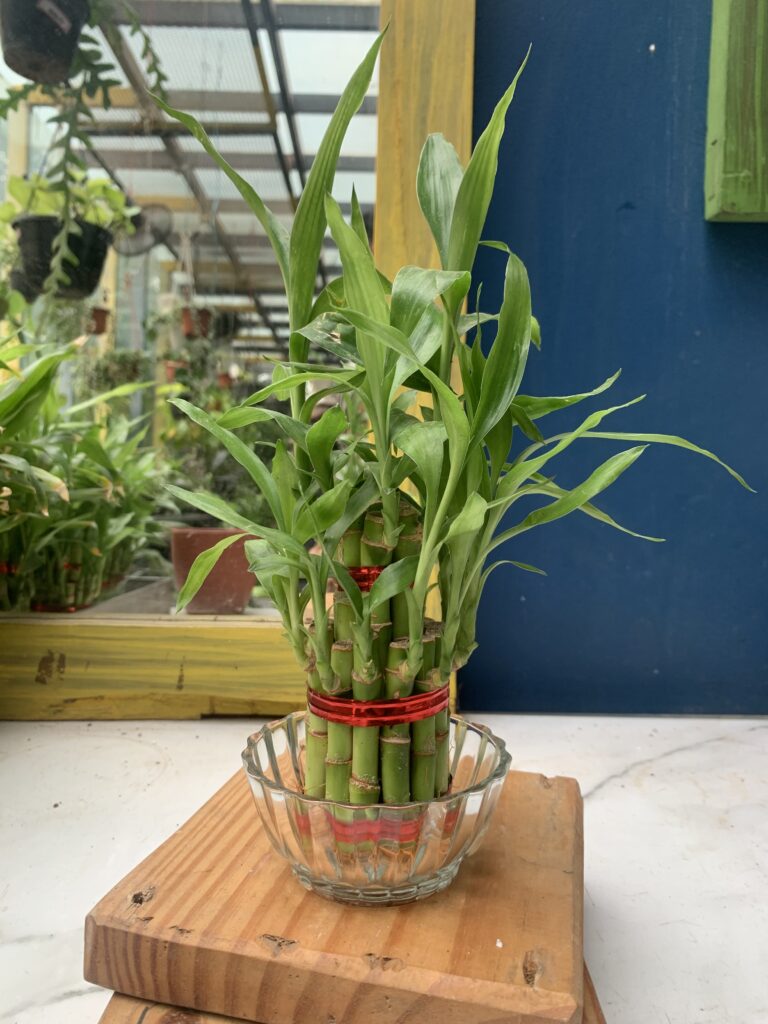Lucky Bamboo (Dracaena sanderiana) is a popular indoor plant known for its elegance, resilience, and ability to thrive in various conditions. The reason Lucky Bamboo turning Yellow is yellow leaves or stems on lucky bamboo may result from factors such as excessive watering, chemicals in the water, too much direct sunlight, temperature changes, or excessive fertilization. Addressing these problems promptly can help your bamboo bounce back.
They say Lucky Bamboo is the easiest plant to care for but behold. I can get even the easiest plants to die. This guide will walk you through the common causes, solutions, and preventive measures to help restore your Lucky Bamboo to its healthy, verdant state.This guide is a truly tested guide that I always ask my people to do in our garden store when any of our spiral bamboo or lucky bamboo starts to yellow.
Causes Lucky Bamboo Turning Yellow?
Yellowing in Lucky Bamboo is often a sign of stress, caused by various factors. Understanding these causes is the first step in nursing your plant back to health.
1. Water Quality: The Silent Culprit
One of the most common reasons for yellowing is poor water quality. Lucky Bamboo is highly sensitive to chemicals such as chlorine, fluoride, and salts commonly found in tap water. When exposed to these, the plant’s roots get damaged, leading to yellow leaves and stalks.
Solution: Use distilled water or rainwater for your Lucky Bamboo. Alternatively, let tap water sit out for 24 hours to allow the chemicals to evaporate. I know lets be real. It’s very unlikely that we would do these. So the easiest thing is to change the water every few days.You should see it lasting longer. We also fill rainwater in buckets to use for watering our plants.
2. Improper Light: The Balancing Act
Lucky Bamboo thrives in indirect sunlight. Too much direct light can scorch the leaves, causing them to turn yellow, while too little light can lead to pale, sickly stalks.
Solution: Place your plant in a spot that receives bright, indirect sunlight. North-facing windows are often ideal. However, do not keep it far away from your north-facing window. At my in-laws house, the lucky bamboo was lovely and fresh when kept alittle away from the west and south facing windows. However, when I changed its placement to a completely no sunlight area , it started to turn pale.
3. Over or Underwatering: Finding the Sweet Spot
Watering is crucial, but too much or too little can harm your Lucky Bamboo. Keeping your lucky bamboo in stale , unchanged water is bound to make your plant rot.
Solution: Keep the roots submerged in 1-2 inches of water as shown below, changing it every week to prevent bacterial growth. Water it just when the roots are immersed in water.
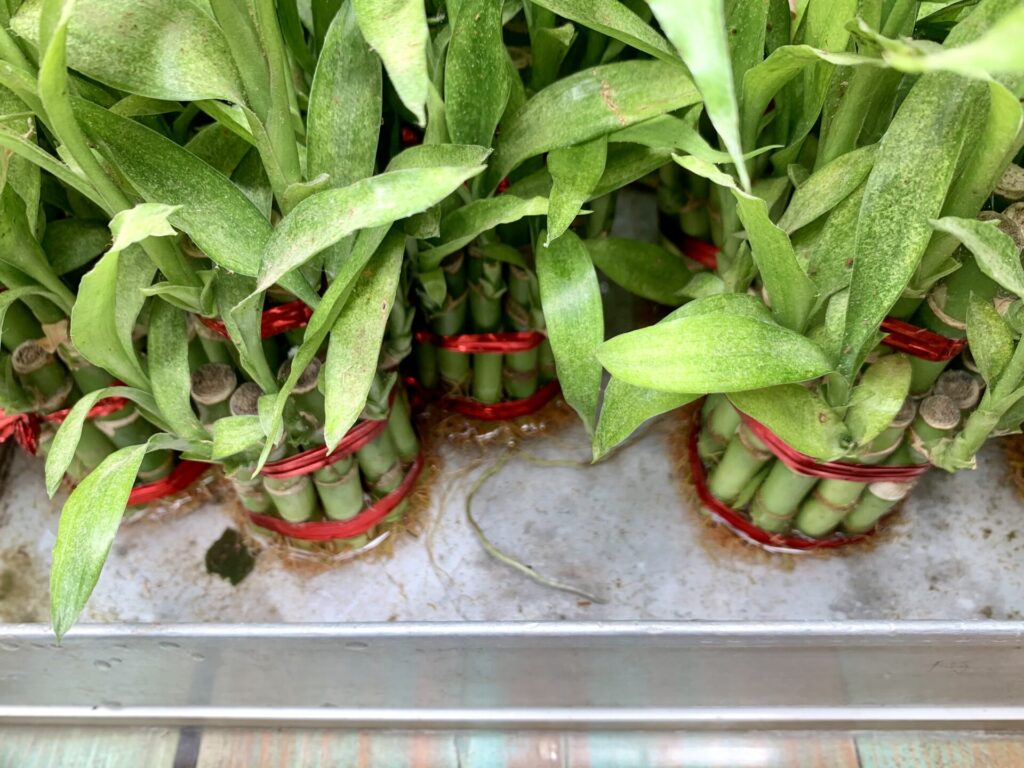
4. Temperature Extremes: Maintaining Consistency
Lucky Bamboo prefers a stable environment. Exposure to extreme temperatures—whether too hot or too cold—can stress the plant, causing yellowing.
Solution: Keep your plant in a room with temperatures between 65°F and 90°F (18°C to 32°C). Avoid placing it near heating vents, air conditioners, or drafty windows.
5. Pests: Unseen Threats
Lucky Bamboo is very prone to mealybugs which will also cause yellowing by feeding on the plant’s sap, weakening it over time.
Solution: Regularly inspect your plant for signs of pests. If you notice any, treat the plant with insecticidal soap or neem oil or just wash away your plant to get rid of mealy bugs.
How to Save Your Yellowing Lucky Bamboo
If you notice yellowing, quick action can often save your Lucky Bamboo. Here’s a step-by-step guide to nursing it back to health:
1. Identify the Problem
Examine your plant and environment to pinpoint the cause—whether it’s water quality, light, or pests. Correcting the root cause is crucial.
2. Prune Affected Areas
Using sterilized scissors, trim off the yellow leaves and any mushy, yellowing stalks. This prevents the spread of rot and encourages new growth.
3. Change the Water or Soil
Replace the water with fresh, distilled water, or if your plant is in soil, consider repotting it with fresh, well-draining soil. This eliminates any build-up of harmful substances.
4. Adjust Light and Temperature
Ensure your plant is receiving the right amount of light and is kept in a stable environment. Sometimes, relocating the plant to a more suitable spot can work wonders.
5. Monitor and Maintain
After making these adjustments, keep a close eye on your plant for a few weeks. Consistent care is key to recovery. After all, you gotta care your plants like babies.
Preventing Future Yellowing
Prevention is always better than cure. By adopting a few simple habits, you can keep your Lucky Bamboo healthy and vibrant.
1. Regular Water Changes
To prevent yellowing caused by poor water quality, change the water in your Lucky Bamboo vase every 7-10 days. This keeps it fresh and free from harmful chemicals and bacteria.
2. Balanced Light Exposure
Keep your plant in a spot where it gets indirect sunlight. If natural light is limited, consider using a grow light, but make sure it’s not too close.
3. Proper Feeding
Overfertilizing can cause yellowing, as excess nutrients can build up in the water or soil. Feed your Lucky Bamboo sparingly, using a diluted liquid seaweed fertilizer every 2-3 months.
4. Routine Inspections
Regularly check your plant for signs of stress or pests. Early detection can prevent more significant problems later on.
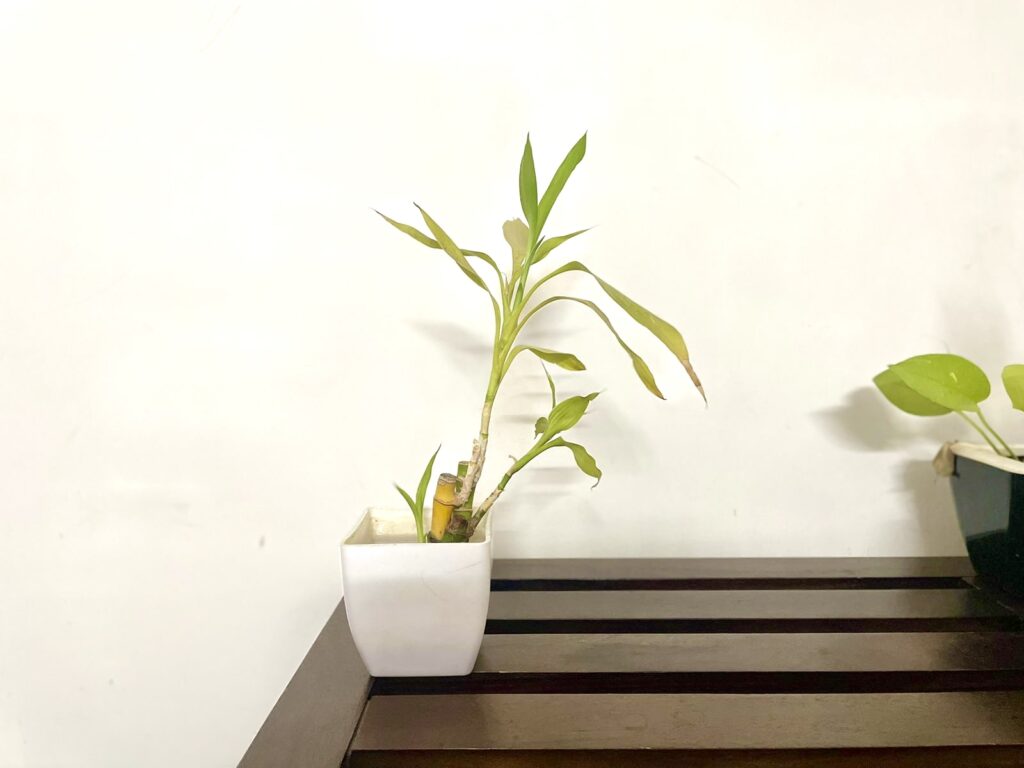
When to Replace Your Lucky Bamboo
Sometimes, despite your best efforts, a yellowing Lucky Bamboo may not recover. If the stalks become mushy or if all the leaves turn yellow, it might be time to replace your plant. You can look at our selection of fresh Lucky Bamboo plants to start anew. We offer same day delivery of bamboo plants in Bangalore only.
Maintaining the health of your Lucky Bamboo not only keeps your plant looking beautiful but also promotes a positive atmosphere in your home or office. If you’re looking to expand your indoor garden, consider adding low-light indoor plants or even succulents to your collection for variety and easy care.
Conclusion
Bamboo Lead turning yellow is a common issue, but with the right care, you can restore its natural beauty. By paying attention to water quality, light, and environmental conditions, you can ensure your plant remains vibrant and healthy. And if you’re ever in doubt, remember that regular care, observation, and timely intervention are the keys to a thriving Lucky Bamboo.
Looking for more gardening tips? Check out our latest articles on how to grow and care for succulents indoors and plants that can boost your mental and physical health.

